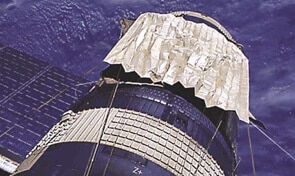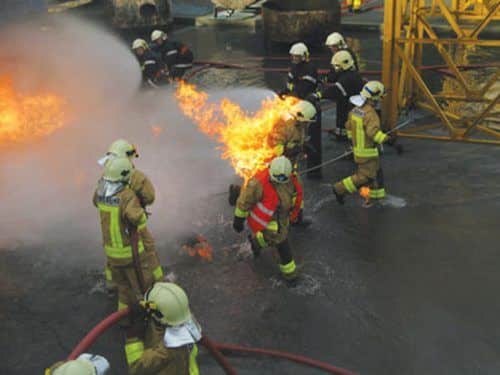With the success of the Apollo program, NASA brought great progress in the fields of rocketry and aeronautics, as well as in the fields of civil engineering, mechanical engineering, and electrical engineering. Lesser-known achievements are some of the byproducts that came out of the Apollo program—partnerships formed between NASA and industry to commercialize the technologies developed for the historic moon mission.
With the success of the Apollo program, NASA brought great progress in the fields of rocketry and aeronautics, as well as in the fields of civil engineering, mechanical engineering, and electrical engineering. Lesser-known achievements are some of the byproducts that came out of the Apollo program—partnerships formed between NASA and industry to commercialize the technologies developed for the historic mission to the moon.
The first link in each paragraph is to the relevant pages on the NASA website in English, the other links are to articles published on the Science website
A cooling suit allows for comfort
Cooling suits, which kept astronauts comfortable during spacewalks, are worn today by race car drivers, nuclear reactor technicians, shipyard workers, people with multiple sclerosis and children with a congenital disorder called hypohidrotic ectodermal dysplasia, which limits the body's ability to cool itself.
More about the technological derivatives of the spacesuits on the NASA website
Fluid recycling in space missions simplifies kidney dialysis
Special kidney dialysis machines were built thanks to a chemical process developed by NASA that removes toxic waste from used dialysis fluid. The process saves electricity and eliminates the need for continuous water supply, allowing the patient more freedom.
For more on the NASA website
Astronaut fitness equipment keeps people fit
A cardiovascular training device developed for astronauts in space led to the invention of a physical therapy and sports development machine used by football teams, sports clinics and medical rehabilitation centers.
- Purified water for saturation / Olive Ferman
- Researchers at the IBM research laboratory in Haifa are developing a technology that will enable water saving
- Space Adventures offers: a space walk for space tourists. The price: 35 million dinars
Space suit technologies improve footwear for athletes
The design and production of shoes for athletes also benefited from Apollo. Spacesuit technologies are integrated into the outer shell of the shoe, and a stress-free "mold blowing" process adapted from the design of NASA's spacesuits is used in the shoe's manufacturing process.
For more on the NASA website
What is the connection between shoes and sleep technology?
Reflective materials insulate houses
Insulation barriers made of metal-coated foil placed over a core of propylene or mylar, which protected astronauts and their spacecraft's delicate instruments from radiation and heat, are now commonly found in residential insulation. Vacuum metal plating techniques have also led to a wide range of commercial products, from insulated outerwear to food packaging, from wall coverings to blinds, from life rafts to candy wrappers, from thermal blankets to photographic reflectors.
The isolation system was used in all NASA manned and unmanned missions. The glowing insulator lining the base of the Apollo landing vehicles are perhaps the earliest and most memorable use of the technology. The reflecting honeycomb of the James Webb Space Telescope is also an example of the continued use of the technology.
For more on the NASA website

Apollo life support systems filter water
Water purification technology used in the Apollo spacecraft is now used in several applications to kill bacteria, viruses and algae in community water supply systems and cooling towers. Filters installed in faucets reduce lead in the supplied water.
For more on the NASA website
Freeze-dried food preserves nutrients and extends shelf life
Freeze-dried food solved the problem of how to feed astronauts on the long Apollo missions. Freeze drying of food preserves the nutritional value and taste, and also reduces weight and extends shelf life.
- A long trip on the way to Mars; NASA sends an identical twin and examines how a year's stay in space affects the astronauts
- We felt like we were on a real space mission - video coverage of the end of the first D-MARS mission in the Ramon crater
Apollo-era electrical circuits remain fresh in large-scale service
Food service systems in hospitals and industrial kitchens use the NASA cooking/refrigeration concept to serve food. The system allows the staff to prepare food well in advance, and maintain the heat, the attractive appearance and the nutritional values while lowering operational costs.
For more on the NASA website
Measurement techniques safely monitor hazardous gases
A hollow retro-reflector, a mirror-like device that reflects light and other radiation back to the source, is used as a sensor to detect the presence of hazardous gases in oil fields, refineries, offshore platforms, chemical plants, waste storage sites and other places where gases may be released into the environment.
More on the subject on the NASA website
- The State Comptroller calls for considering the removal of the polluting factories from Haifa Bay
- Gas, sea and smoke changes: the fight for the Leviathan rig
Process lubricant finds many applications
A process for bonding dry lubricant to cavity metals has led to the development of surface-enhanced, or synergistic, coatings that are used in applications from pizza making to laser manufacturing. Each of the coatings is designed to protect a specific metal group or group of metals to solve problems encountered in service conditions, such as corrosion and wear resistance.
More on the subject on the NASA website
Green construction uses space suit fabrics
The same material that was used in Apollo-era spacesuits has become a profitable and environmentally friendly building material. Teflon-coated fiberglass rings, which are used in buildings around the world, create a permanent tent-like roof. The durable white material, which is cheaper than normal roofing materials, allows natural light to enter and save a lot of energy.
Insulation protects the Alaska oil pipeline
Metal-bonded polyurethane foam insulation developed to protect Apollo-era spacecraft was also used in the Alaska oil pipeline, where its temperature control properties were in high demand. To maintain its fluidity, the oil needs to be kept at relatively high temperatures (82 degrees C), a difficult task in the Arctic region. The insulation from NASA solved this problem.
For more on the NASA website
For more on the science website"
- Research: Most of the North Pole will melt by the end of the century
- Alberta's Oil Sands: The Blessing and the Curse
Fireproof fabrics protect firefighters and soldiers

After a fire in the Apollo launch pad killed three astronauts, NASA worked with private industry to develop a series of fire-resistant fabrics for use in suits and spacecraft. These materials are now used in many applications in firefighting, the military, motorsports and elsewhere.
For more on the NASA website
For review on the NASA website
More of the topic in Hayadan:
